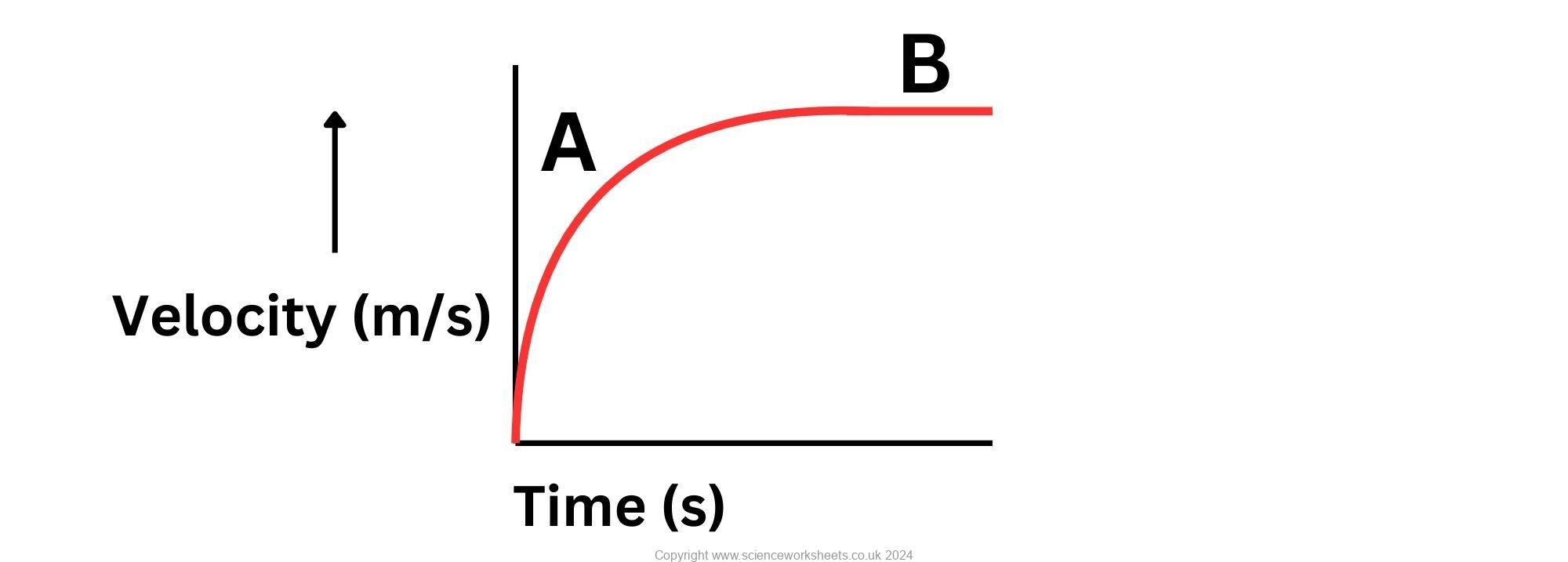AQA GCSE Terminal velocity(Physics)
Terminal Velocity
Terminal velocity is achieved when an object has a constant speed in one direction and the forces acting on the object are balanced.

The man is about to drop a ball. Once the ball is dropped, as weight is the only force acting on the ball it will start to accelerate downwards as shown below. The acceleration occurs due to the force of gravity acting on the object.
As weight is the only force currently acting on the ball, its current downward resultant force (overall force) is also 5N

As the downward velocity increases, the ball has to move through the air, which provides air resistance.
Now there is a 2N air resistance force, and weight is still 5N downwards. This will give a downward resultant force of 3N.
As the resultant force has decreased, this will mean the acceleration will decrease.

The ball is still accelerating downwards, so its downward velocity is still increasing.
Remember because the resultant downward force decreased, acceleration is smaller, so the increase in velocity is less than at the start!
As velocity is increasing, air resistance will keep on increasing until a point is reached where the air resistance is equal to the weight as shown below

Once the weight = air resistance, the resultant force is 0N. At this point the acceleration will be zero!
Also, the ball is at its terminal velocity. Yes, it is still moving downwards at constant speed in a set direction.
Velocity time graph of this journey
In the velocity time graph below it will show the journey of the ball falling from when the man releases the ball. The journey has 2 main parts A and B.

A – This is where the weight is greater than the air resistance. So, there is a downward resultant force >0N. This means that the ball is accelerating downwards.
A – As time increases, velocity increases, air resistance increases
A – Remember the gradient of the velocity time graph is acceleration. As time increases, gradient decreases, so acceleration is decreasing.
B – This is where weight = air resistance, so resultant force =0N. At this point the ball is falling through the air at terminal velocity.
Practice Question
1. Define the term terminal velocity
2. Explain what is meant by resultant force
3. When an object is dropped in a fluid, why does it accelerate downwards?
4. Using the velocity time graph shown above, predict the appearance of the next stage in the graph, when the ball hits the ground. You can sketch your predicted graph on a piece of paper
5. Use the image below to answer the following question


5a. Describe and explain how force 1 and 2 will change as time increases using the graph above.
You can reference these changes to stage A and B which are labelled on the graph.
Include key words such as acceleration and velocity in your answer.
Absorption and Emission of EM Radiation
JJ Thomson and Plum pudding model
Ernest Rutherford and the Nuclear Model
Niels Bohr changing the Nuclear Model
Discovering the Proton and Neutron
Measuring radiation from radioactivity
Radiation types and properties
Random nature of radioactive decay
Radioactive contamination or irradiation
Hazards of contamination and irradiation
Studies on the effects of radiation on humans
Different half lives of radioactive isotopes
Nuclear Fission Chain Reaction
Writing nuclear fission equations
Drawing ray diagrams for a concave lens
Drawing Ray Diagram to produce a virtual image for a convex lens
Drawing ray diagram to produce a real image for a convex lens.
Specular and Diffuse Reflection
Seeing Coloured Objects Part 2
Viewing objects through coloured filters
Transparent, Translucent and Opaque